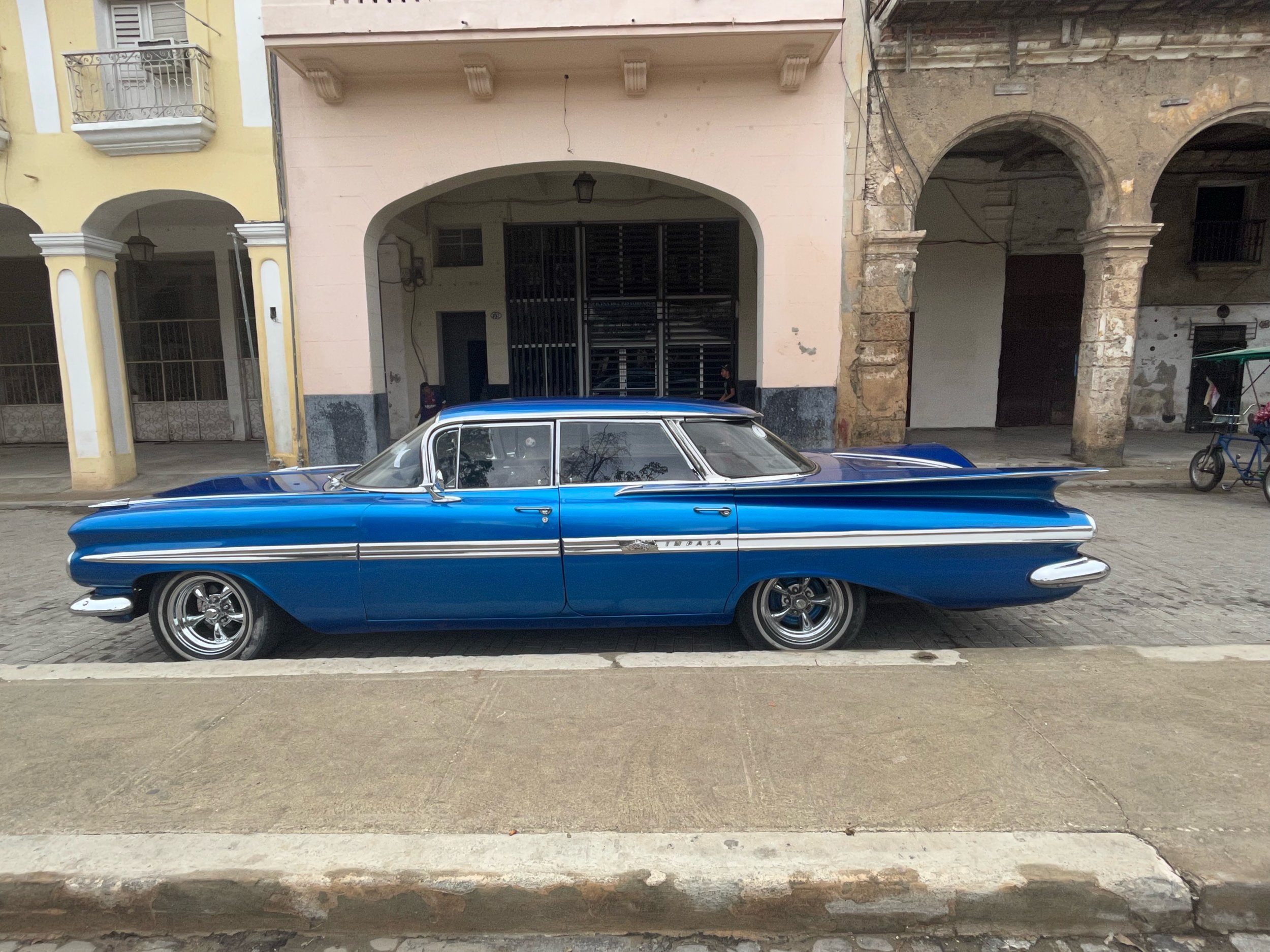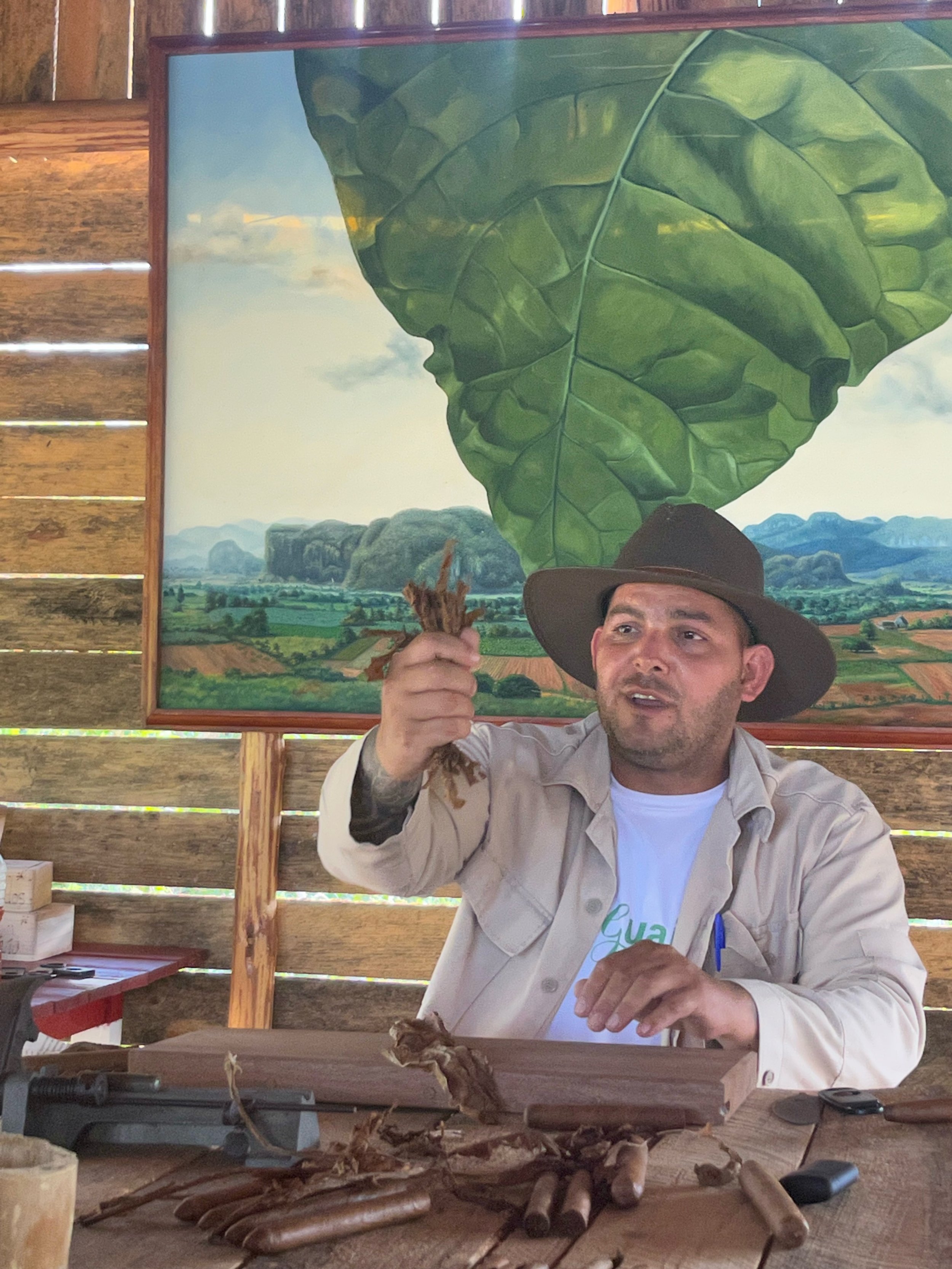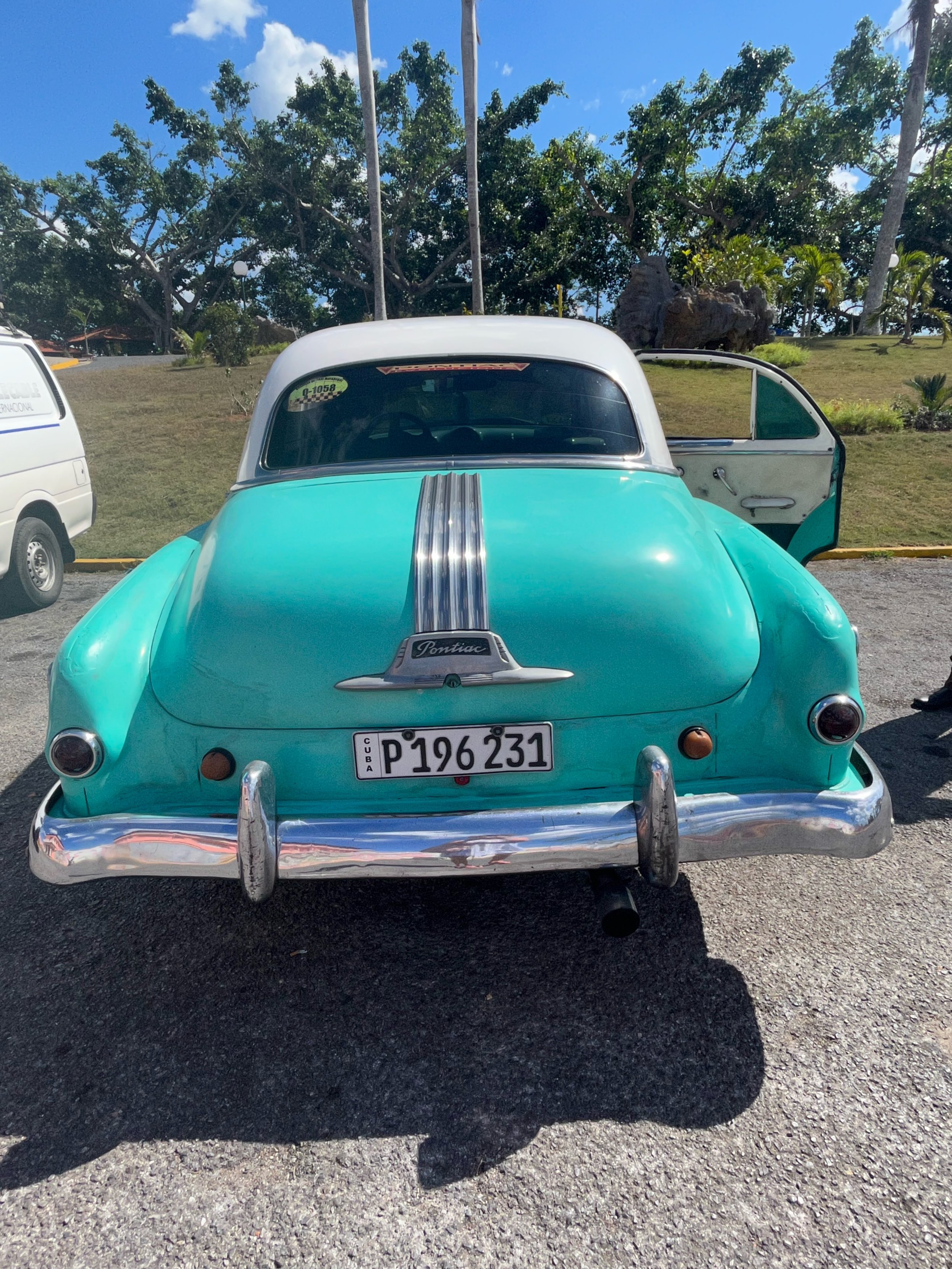Wait. You went to Cuba?
Why? How was it? What made you go there? What was it like?
Why? Because when we fly over Cuba on our way to Jamaica, we are in awe of the size of the island. Because after flying over Cuba nearly 15 times, we finally said, “Let’s go see what’s down there!”
We got there from Fort Lauderdale in less than a hour for less than $100 each in airfare.
People of a certain age know that traveling to Cuba is a privilege that was not always afforded to American citizens purely because of politics. Growing up in the 1960s, we learned of the Cuban Missile Crisis as a near catastrophic disaster averted by the heroic and strategic wit of John F. Kennedy. We heard Fidel Castro’s name get thrown around in relation to communism; Che Guevara’s name in relation to Marxism, both dirty words used in the propaganda machine of the then “cold war.”
Che’s image is everywhere
My limited knowledge of Cuban history became painfully evident when I visited Havana a few months ago. I walked along the streets of Old Havana marveling at the majestic architecture, trying to imagine the city in its heyday. Who built these fabulous hotels and buildings? The ironwork? Much of the city appears to be war torn, buildings in serious disrepair, where behind their intricate and wonderful facades, live Cuban people, hustling to make a meager living.
The Cuban people we met were very friendly and helpful, eager to talk about their government and its stronghold on its citizens. They genuinely are happy that Americans are now able to visit Cuba. It is good for their economy. We witnessed people on line at local markets waiting for a bagful of produce and a small purse full of pesos, provided by the gov’t. They are very rarely given meat or fish. We learned from our cab driver that farmers may be given a cow by the government, but the profits from its milk and cheese must be handed back over to the government to be redistributed to citizens. If you kill your female cow, you will go to prison.
At our favorite cafe - El Dandy
In fact, if you are in possession of illegal drugs, you will go to prison. If you steal, you will be sent to prison. If you have a weapon, prison. There was never a time we felt unsafe in Cuba.
Tourists are recommended to arrive in Cuba with euros (the most widely accepted currency in restaurants and shops.) You can also trade euros in for CUPS (Cuban pesos) and are advised to get them at the airport upon arrival. There are no banks or ATMS, so you must arrive with cash. Very few vendors would accept American money, although a few asked us for dollars.
I always do my homework when traveling somewhere new and especially when planning our trip to Cuba. I read as much as I could about the current laws that allow Americans to travel to Cuba, but with specific requirements and limitations. There are several options to obtain a visa to enter the country. There are 12 different visas to choose from and we were advised to check the box for Supporting the Cuban People. It costs $50 and we were told that the money goes directly to the people. The visa could be purchased at certain airports, in this case in Fort Lauderdale at the JetBlue counter. This particular visa allowed us access to visit most of the island of Cuba. (If you go online you can read about the other 11 options for visas to Cuba and what the advantages of each are.) We heard that there are government owned beaches where Americans are not allowed, but we never saw anyone checking visas or denying entry to anyone in our travels there.
The best way to tour the city of Old Havana is a taxi cab. The taxi cabs in Cuba are recycled American cars from the 1950s with rebuilt engines, painted bright colors and competing for tourist business. Viahero (see below) recommended a number of day excursions that could be booked in advance. We chose to visit a tobacco farm in Vinales. The cost was 180 euro, close to $200.
My dad had this car in white when we were growing up
Viñales is a city in the west and a two hour drive from Havana. It serves as a gateway to the Sierra de los Organos mountains and the Viñales Valley. The valley's tall, steep-sided limestone hills, known as mogotes, draw rock climbers. We wanted to see where they grew the tobacco for Cuban’s famous cigars. Neither one of us smoke, but we each smoked a recently rolled cigar along with a handful of tourists from Eastern Europe. We noticed that most tourists were from outside of the United States.
Castro commissioned this mural in the 1960s
Learning about Cuban cigars
Faking it on the balcony of our Airbnb
Our Airbnb had two bedrooms, a full kitchen, three bathrooms and air conditioning
In Old Havana
My heart is in Havana
The next day we wanted to take another excursion to a beach about two hours away for another 180 euro car ride, but we declined because we thought it was too much. We did not see much of Cuba’s beaches, but we’ve heard that they are fabulous.
We were warned to bring our own toilet paper when traveling around the island. In fact, you are lucky if you find a public toilet with an actual seat on it, let alone paper. Probably the only thing about Cuba that was truly unfortunate.
This was our cab to Vinales. It overheated on the two hour drive home.
Would I go back again? Hell, yeah.
In my online research, I found a company called ViaHero. I cannot underestimate the value of the services this company offers. We paid $40 a day to ViaHero and they hooked us up with two local citizens (You have a choice who you want to work with based on biographies) who became the personal planners for our trip. It was the best $200 we spent on our 5 day trip to Cuba. Davied (who spoke English) created our itinerary based on our particular travel preferences and budget; he provided us with transportation needs and made reservations at restaurants and attractions according to our requests. All of the restaurants recommended by Viahero were excellent. We were able to call or text Davied with any questions or problems we had along the way. He was always responsive and very friendly. Daviet will create a very comprehensive travel folder specifically for your needs with very important information regarding everything from money issues to recommendations for hotels, restaurants and activities. Here is his link at ViaHero if you ever decide to visit Cuba.
httpps://www.viahero.com/travel-to-cuba/travel-planners/109/
He also has a website for planning family trips.
https://www.viajerosunrise.com/family-trips-cuba/











